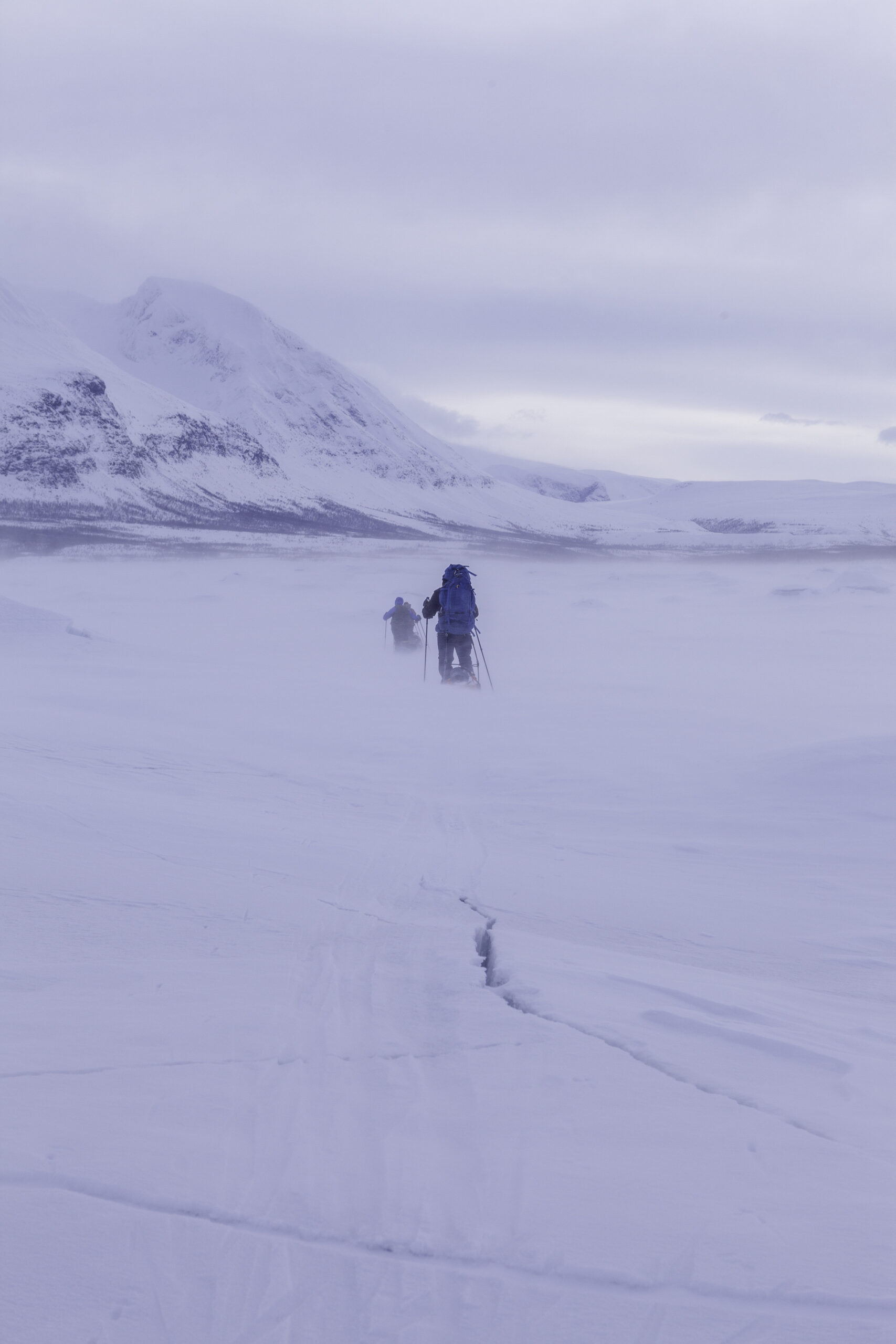How do you know when
enough is enough on a trip?
Ever wondered if it’s time to stay in camp or to put your head down and just push on? There is no universal answer. Sometimes it’s a simple, obvious equation and sometimes it’s your responsibility as the leader of the expedition to have the things below in the back of your head, ready to change focus or put everything to a halt.
Weather
- Knowledge about upcoming weather conditions? Uncertainty or no knowledge of the forecast?
- Wind strength, wind direction, temperature, visibility, windchill. Will the weather get worse or stabilize?
- Does the tent material make a lot of noise and jerks? Does it feel unsafe?
- Temperature? Equipment and skills for current and upcoming weather?
- Poor or non-existent visibility? Knowledge of the terrain and how to navigate in such conditions? Easy or difficult terrain?
- Tailwind or headwind? Is there a possibility of changing change route a little for better wind conditions?
Terrain
- Where is the current tent site located, is it exposed to wind? Does it need to be improved in any way?
- What does the intended route look like? Where are you going? More exposed or better protected? What is along the intended route? Roads, bailouts, forest to shelter in along the way?
- What kind of knowledge do you have about the terrain? Have you or anyone in the group been there before? Simple terrain or impenetrable unknown terrain?
Group
- Strength and energy in the group? Together and individually?
- Overall experience and knowledge in the group
- Positive energy – Look after each other, remind each other, help out, check on each other.
- Mental status – Feeling, mindset, stressed, not in a good mood?
- Group dynamics – How coordinated are you? Alone? If one or several people in the group doesn’t feel ready, it might be better to wait for the right feeling or wait for a weather window.
- Can the size of the group affect whether to go or not?
- What is the goal of the trip? What have you written in the travel and safety plan?
Consequence
- What’s the worst that could happen? Safety first!
- Leave the tent, take a short walk around the camp, look at the surroundings and feel the weather before you decide.
- First day out or the last day? Behind schedule or ahead? Bottom line… Do you need to push on?
- Heading for a cabin? Shelter in the forest or behind a hill? False security or good?
- Pack everything in the tent except sleeping bag and sleeping mat for quick departure when there is a gap in the weather? Also good to check the time aspect if several tents in the group. Are you ready at the same time? 30 minutes behind schedule may mean that friends have to wait outside in the storm. Help each other!
Decision
Stay or linger – The overall risk assessment shows that it is better to stay put!
- Improve the campsite.
- Prepare and minimise the chance for tent damage!
- Physical and mental well-being, warm and dry clothes, cook hot good food and take extra care of each other – Create security!
Move on – The overall risk assessment shows that it is better to move on to find a better camp site or carry out the day and follow the travel and safety plan despite the adverse weather!
- Plan route/navigation ahead
- Everyone has extra warm clothes, food and drink available
- Where are you aiming to camp. Deadline for camp?
- Do a risk assessment for the new route
- During the trip, stay together and check on each other on a regular basis ↟


